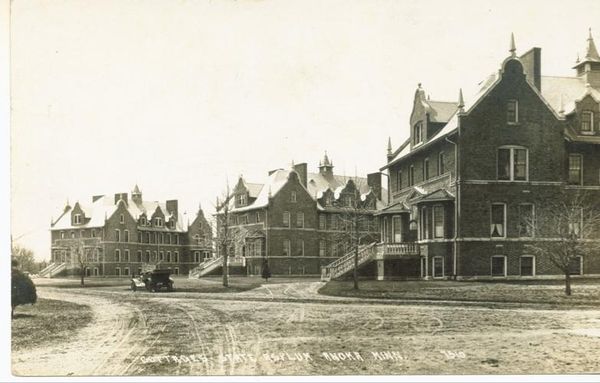Difference between revisions of "Portal:Featured Image Of The Week"
From Asylum Projects
M-Explorer (talk | contribs) |
M-Explorer (talk | contribs) |
||
| Line 1: | Line 1: | ||
{{FIformat | {{FIformat | ||
| − | |Image= | + | |Image= AnokaSH12.jpg |
|Width= 600px | |Width= 600px | ||
| − | |Body= | + | |Body= Anoka-Metro Regional Treatment Center is the current name of what was originally the First State Asylum for the Insane (1900-1919), [[Anoka State Asylum]] (1919-1937), and Anoka State Hospital (1937-1985). The first 100 patients arrived at the newly opened Anoka Asylum in March 1900. The group of men who traveled by train from the St. Peter hospital were classified as “incurables.” The asylum was not built originally as a place for treatment. Rather it was where most of these men would live out their days. According to historical records, 86 of those first 100 patients died there and many were buried in numbered graves at the cemetery on the grounds. |
}} | }} | ||
Revision as of 04:02, 31 March 2024
Featured Image Of The Week
Anoka-Metro Regional Treatment Center is the current name of what was originally the First State Asylum for the Insane (1900-1919), Anoka State Asylum (1919-1937), and Anoka State Hospital (1937-1985). The first 100 patients arrived at the newly opened Anoka Asylum in March 1900. The group of men who traveled by train from the St. Peter hospital were classified as “incurables.” The asylum was not built originally as a place for treatment. Rather it was where most of these men would live out their days. According to historical records, 86 of those first 100 patients died there and many were buried in numbered graves at the cemetery on the grounds.
